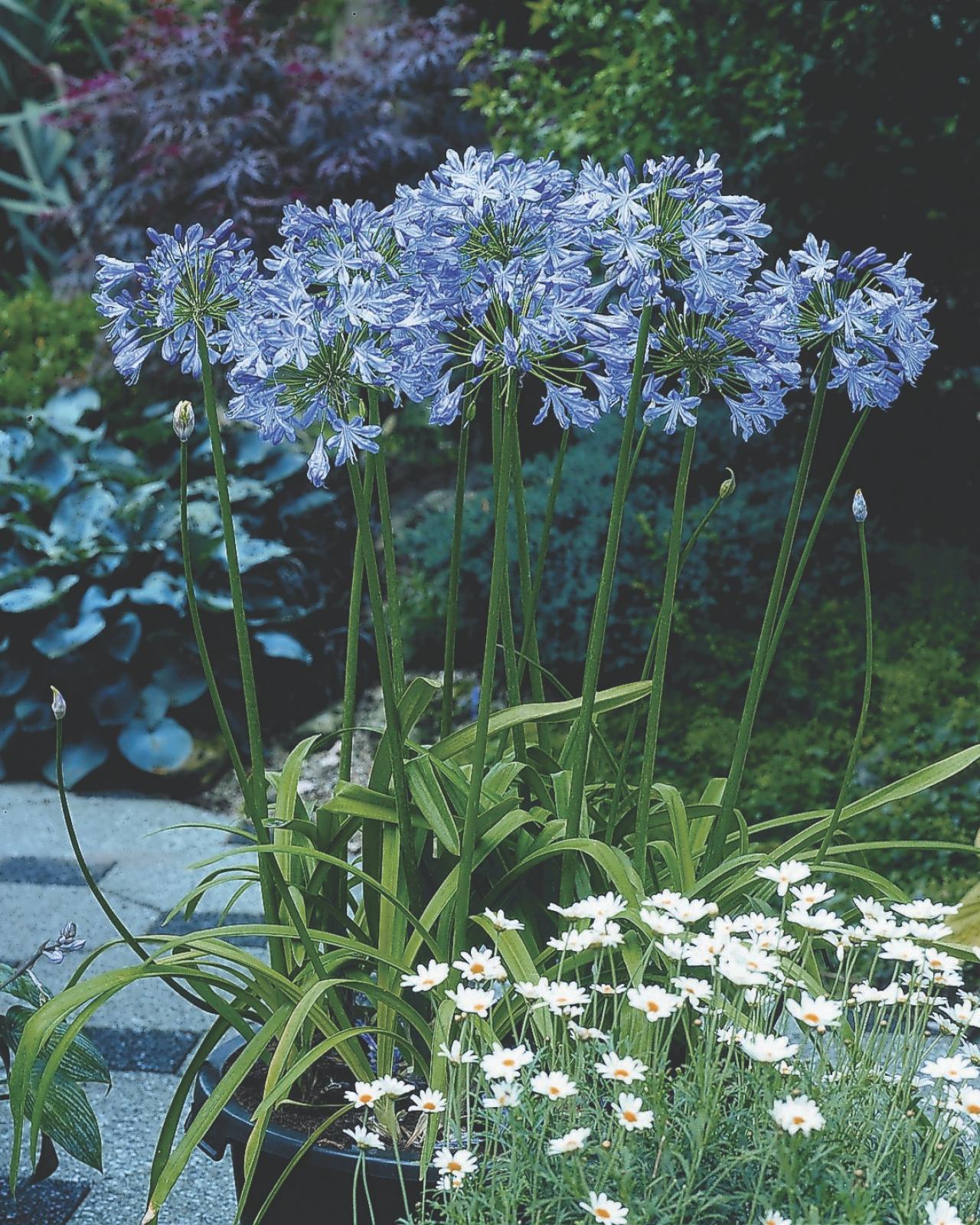Agapanthus Expanding Problems: Soil, Sunlight, and Watering
Agapanthus Expanding Problems: Soil, Sunlight, and Watering
Blog Article
Releasing the Secret to Successful Agapanthus Growing: Idea for a Flourishing Garden
In the world of gardening, cultivating agapanthus efficiently needs a calculated technique that includes various elements of plant care. By understanding the subtleties of agapanthus growing, one can produce an environment where these plants grow and flower abundantly.
Growing Agapanthus: Finest Practices
When planting Agapanthus, appropriate soil prep work is crucial for making certain successful development and advancement of these beautiful flowers. Agapanthus, generally called Lily of the Nile or African lily, thrives in well-draining dirt with a slightly acidic to neutral pH degree - Agapanthus. Before growing, it is important to amend hefty clay soils with raw material such as compost or peat moss to boost drain and give necessary nutrients for the plants
To plant Agapanthus, select an area that gets complete sunlight to partial color, as this will certainly advertise healthy growth and plentiful flowering. Dig a hole two times the size of the plant's origin ball and put the Agapanthus at the exact same depth it was previously expanding. Gently backfill the hole with dirt, pushing down securely to remove any type of air pockets around the origins.
Water the newly planted Agapanthus extensively and continue to keep the soil uniformly wet, particularly throughout the plant's active expanding season. Agapanthus. Using a well balanced plant food once a month can additionally sustain the plant's growth and flowering. By adhering to these best techniques for planting Agapanthus, you can develop a stunning screen of these fascinating flowers in your garden
Suitable Dirt Issues for Agapanthus
For optimal growth and flowering success of Agapanthus plants, making certain the soil conditions are optimal is critical. Agapanthus thrives in well-draining dirt with a somewhat acidic to neutral pH degree varying from 6.0 to 7.0. This sort of dirt enables adequate water drainage, stopping waterlogging which can cause root rot. To improve soil water drainage, think about adding natural issue such as garden compost or peat moss when preparing the growing website. In addition, Agapanthus favors dirt that is abundant in nutrients, so including a well balanced plant food throughout the expanding season can promote healthy growth and vibrant blooms.

Watering and Feeding Tips
To make certain healthy and balanced development and vivid flowers, correct watering and feeding techniques are essential for successful Agapanthus farming. Agapanthus plants profit from routine watering, specifically during the growing period.
When it involves feeding Agapanthus, a balanced fertilizer with equivalent components nitrogen, phosphorus, and potassium can be used in the spring to promote healthy and balanced development and flowering. Slow-release fertilizers are perfect for providing nutrients progressively over a prolonged period. Stay clear of over-fertilizing, as this can cause extreme foliage development at the cost of blooms.
Furthermore, including raw material like compost into the dirt can boost nutrient levels and boost dirt structure, assisting in the general health and wellness of the Agapanthus plants. By following these watering and fertilizing pointers, garden enthusiasts can ensure their Agapanthus plants grow and produce stunning screens of flowers.
Pruning and Deadheading Techniques
Proper trimming and deadheading techniques play an important duty in maintaining the wellness and looks of Agapanthus plants, enhancing the important practices of watering and feeding for effective farming. Trimming Agapanthus involves getting rid of invested blossom heads, yellowing or dead leaves, and overall shaping of the plant to promote better development. Deadheading, the process of eliminating faded blossoms, not just improves the plant's look but also motivates further growing.
When deadheading Agapanthus, it is recommended to snip off the blossom stem at the base using sharp, tidy shears. This procedure reroutes the plant's power from seed production back into origin and vegetation development, promoting a healthier and a lot more robust plant. Normal deadheading can extend the growing duration of Agapanthus and prevent self-seeding, which can lead to congestion.
In terms of trimming, Agapanthus normally advantages from a light trim after blossoming to clean up the plant and motivate fresh growth. Reducing the invested flower stems and removing any type of dead or broken foliage aids preserve the plant's vitality and total look. Nonetheless, it is necessary to avoid cutting into the crown of the plant, as this can damage its health.

Protecting Agapanthus From Pests and Diseases
Implementing efficient insect and illness administration methods is vital to securing the health and wellness and vigor of Agapanthus plants in farming. Agapanthus are generally sturdy plants, yet they can still succumb numerous parasites and conditions if not appropriately looked after. One typical pest that influences Agapanthus is the Agapanthus borer, a caterpillar that tunnels into the plant, creating damage to the fallen leaves and flowers. To protect against problems, regular inspection of the plants is crucial. If borers are discovered, they can be manually eliminated, or insecticidal soap can be used as a control action.
In enhancement to parasites, Agapanthus are susceptible to diseases such as origin rot and fungal fallen leave places. By remaining cautious and dealing with bug and illness issues quickly, gardeners can help their Agapanthus prosper and thrive.

Conclusion
Finally, effective growing of agapanthus requires proper planting strategies, suitable soil conditions, ample watering and fertilizing, normal pruning and deadheading, and protection from conditions and pests. By following these methods and her response tips, garden enthusiasts can make certain a growing yard loaded with stunning agapanthus blooms. Agapanthus. Bear in mind to preserve constant treatment and focus to detail to promote the health and wellness and long life of these stunning plants
When growing Agapanthus, correct dirt preparation is vital for making certain effective development and development of these stunning flowers.Water the newly planted Agapanthus thoroughly and Read Full Article continue to maintain the dirt equally wet, specifically during the plant's active growing season.For optimal growth and blooming success of Agapanthus plants, guaranteeing the soil conditions are ideal is crucial. When transplanting or planting Agapanthus, ensure the dirt is well-prepared to provide the necessary structure for the plants to develop themselves efficiently. One usual parasite that influences Agapanthus is the Agapanthus borer, a caterpillar that passages right into the plant, triggering damage to the blossoms and useful content leaves.
Report this page